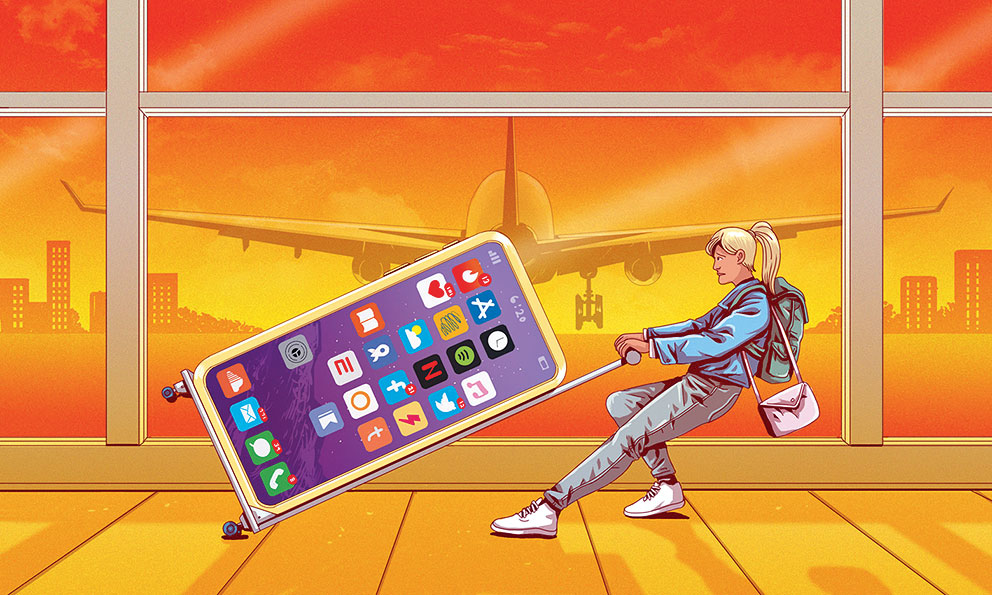Don’t even think about leaving your smartphone at home this summer if you are travelling to a foreign country. As much as we despise our attachment to our phones, we can’t deny it is an indispensable travel companion that solves many problems, from showing us maps when we get lost to displaying restaurant recommendations when we are hungry.
So what are the routes to being able to use your smartphone while in a foreign country, given that your wireless service doesn’t generally extend to international travel?
For this column, I’m focusing on how to take your smartphone abroad for a more reasonable price, which involves setting up wireless service with a foreign carrier’s network. With this method, it will cost $15 to $40 for wireless data for a two-week international trip.
Unlock Your Phone
To ensure your phone will work with a foreign carrier’s network, you first have to confirm that your phone is unlocked. That means your carrier has removed restrictions preventing your phone from working with other networks. Whichever phone provider you use, it’s best to play it safe. Double-check with your carrier or service provider that your phone is unlocked and ready for taking abroad.
Shop for a Foreign SIM Card
After confirming your phone lacks carrier restrictions, it’s time for the tougher part: buying a foreign SIM card for your phone. There are two main approaches to buying a foreign SIM card, each with pros and cons:
- Before your trip, you can order a SIM card online and have it shipped home. First, do a Web search on the top-rated networks in the destination country. Then on a digital retailer like Amazon, search for SIM cards offered by one of those brands. When you land, follow the instructions included with the phone card to set it up.
The advantage to this approach is that when you arrive, you can start your vacation right away without having to search for a SIM card. The downside is that if you pick a SIM card from a subpar brand, there is a risk that the service might not work when you arrive.
- You can buy a SIM card at a wireless store at your destination. First, search for a wireless store near your hotel. After checking in, go to the store and tell the representative that you are a tourist looking to buy a SIM card for the duration of your trip. The store representative will help you pick a data allotment and set up the phone for you. The advantage to this approach is getting help from a service representative; the downside is that a potential language barrier could make it difficult to express what you want.
I’ve tried both methods. Going to a wireless store is probably your safest bet to ensure the cellular service will work properly.
How much data to buy? It depends on the length of your trip and how you use your phone. If you use your phone for lightweight tasks like pulling up maps and looking up activities and restaurants, 1 gigabyte a week should suffice. If you plan on incessantly posting on social media to induce FOMO for your friends, go for 2 gigs a week.
Prepare Your Handset
Before you depart, pack and download everything you will need ahead of time for your phone. Here are some must-dos:
- Pack a SIM card ejector and some tape. When you arrive at your destination, use a SIM card ejector, which is a small metal pin, to eject your SIM card tray and replace yours with the foreign one. When you arrive home, you will have to eject the tray again to swap back to your domestic SIM. The ejector is tiny, so use a piece of tape to stick it to your wallet or passport holder.
- Download offline maps. The Google Maps app lets you store the mapping data for large areas to your device, which will come in handy in areas with spotty cellular service. Search for your travel destination, and in the app’s settings, tap Offline maps and select Custom maps to save the mapping data for the general area.
- Install an app for phone calls and texts. Using a foreign phone service means you will lose access to your usual phone number, so you will have to switch to an alternative for placing calls and texts over a data connection. Messaging apps with voice calling include WhatsApp, Signal and WeChat.
- Restrict your data consumption. By default, many apps on your phone download data in the background. If you leave those apps alone when using a foreign SIM card, you could quickly burn through all the data you just bought for your trip. To prevent that, you will have to change some settings.
Here’s how to do that on an iPhone: Open the Settings app and tap Cellular to load a switchboard for apps using cellular data. Toggle off cellular access for all but the ones you need for travel. Similarly on Android, open the Settings app, tap Network & Internet, Data usage, and then select Mobile data usage. From here, select the data-hogging apps and disable background data.
This all sounds like a lot of work, but I promise that after trying it once, traveling with a smartphone gets easier with every trip. And there’s a bonus: The money you save can be spent on food or loads of gifts.










